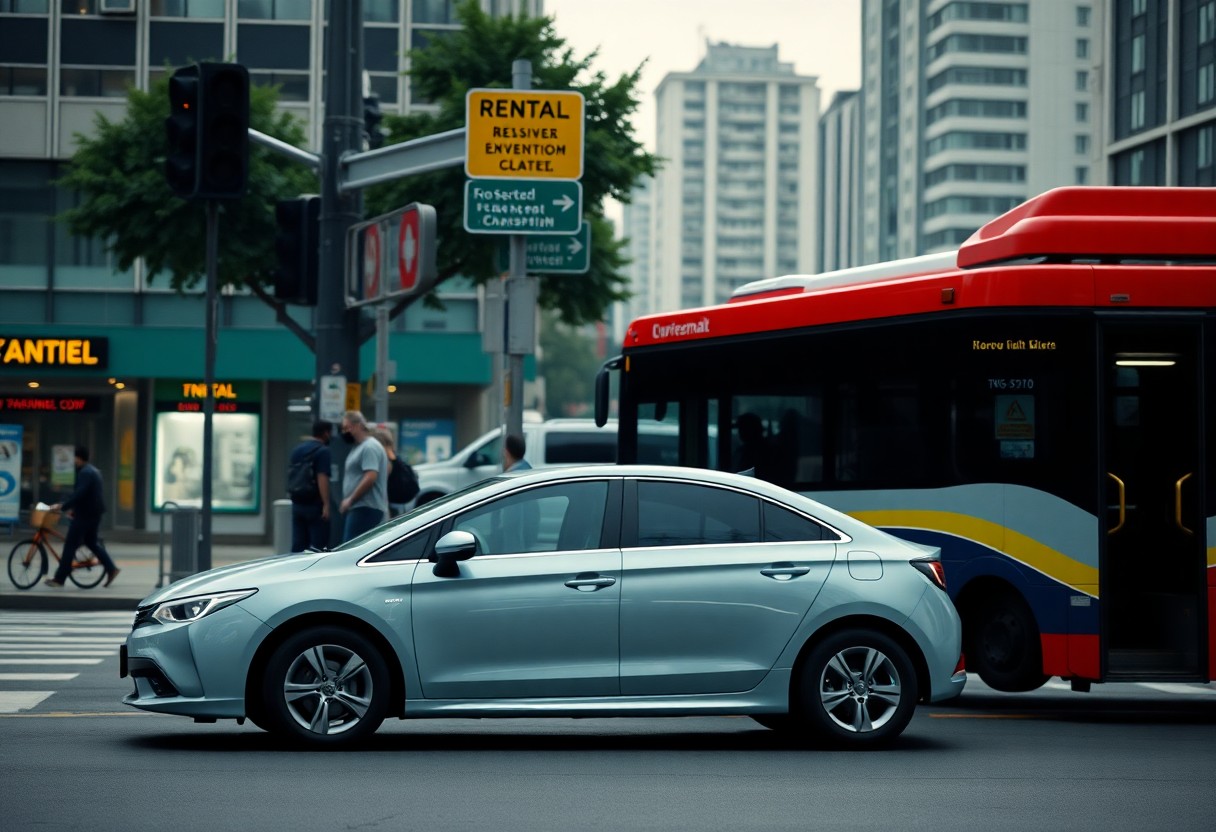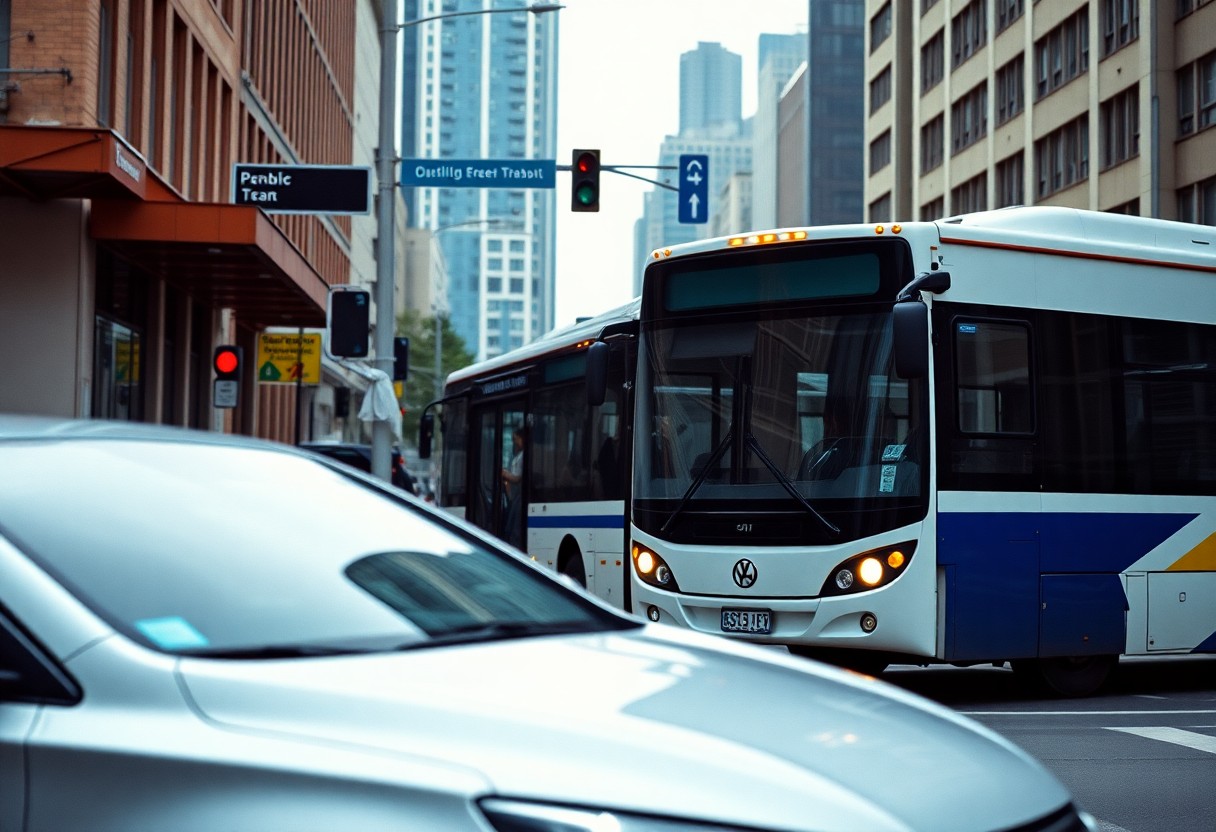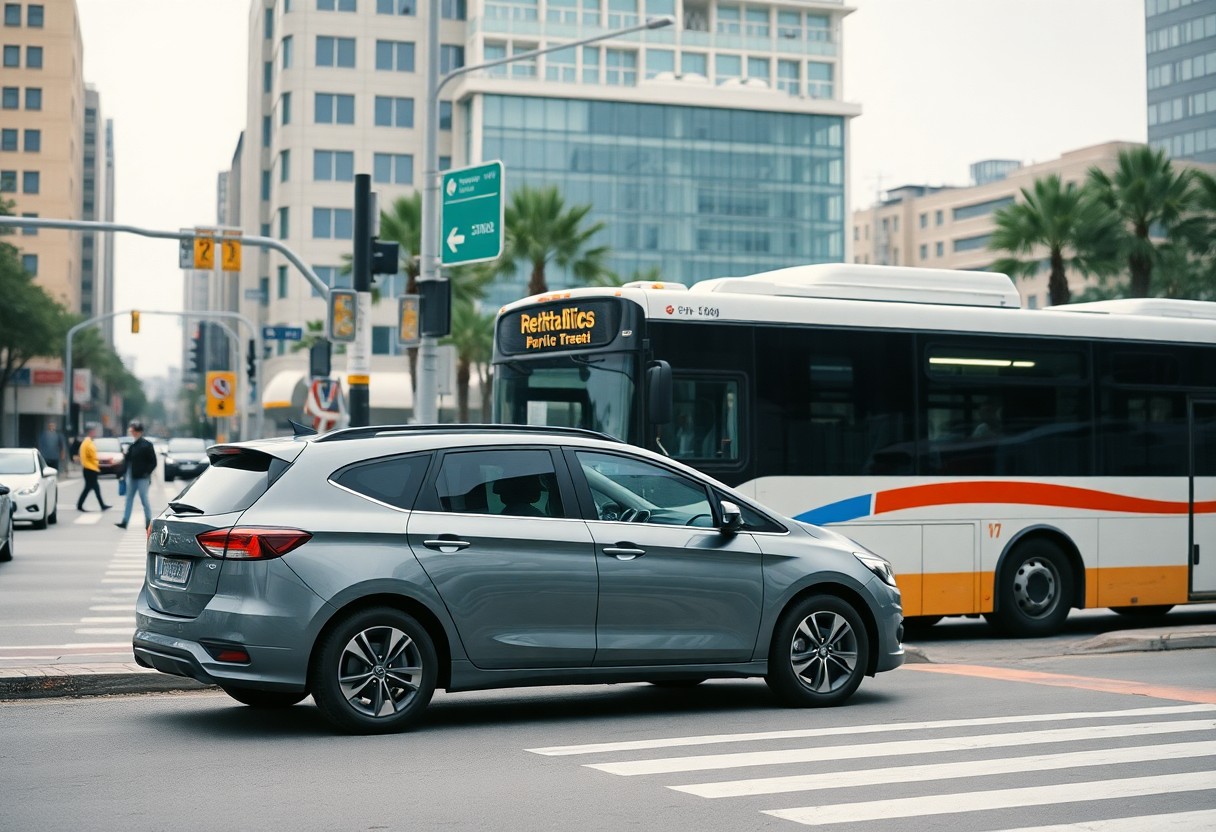As travel expenses continue to increase and personal time becomes increasingly valuable, choosing the best transportation method for your journey is essential. This decision will significantly affect your financial budget and overall travel experience. When planning your next adventure, you’ll need to weigh the freedom of a rental car against the cost-effectiveness of public transportation. Your choice will depend on various factors, including your travel destination, itinerary, and the number of companions. This detailed guide aims to assist you in evaluating the crucial considerations, from hidden rental fees to public transport accessibility. By doing so, you’ll be equipped to make the most informed decision tailored specifically to your unique travel needs.
Discover the Unmatched Freedom of Renting a Car for Your Travels
The independence afforded by having your own rental vehicle opens up a multitude of travel possibilities. By choosing a rental car, you gain complete autonomy over your travel plans, allowing you to visit destinations that extend beyond the usual tourist hotspots. Recent studies suggest that 73% of travelers prefer rental cars because they can modify their plans on a whim, making this option particularly attractive for those who value freedom and flexibility during their travels. With a rental car, you can embark on spontaneous adventures, exploring hidden gems that might be missed when relying solely on public transport.
Evaluating the Advantages and Limitations of Rental Cars
Upon securing your rental vehicle, you will experience both newfound freedoms and specific limitations. You’ll have the opportunity to explore off-the-beaten-path destinations and adjust your schedule as you see fit, but it's vital to be aware of potential parking fees that can average between $25 and $45 daily in busy urban areas. Additionally, you may encounter navigation challenges in unfamiliar locations. Your rental car becomes a personal sanctuary, yet you will also need to manage fuel expenses and deal with varying traffic conditions independently. Understanding these factors is crucial for optimizing your travel experience.
Uncovering Hidden Costs and Unexpected Savings with Rentals
While the convenience of a rental car comes with costs, it can also provide surprising benefits. Although initial rental fees may seem high, it’s essential to note that traveling in groups can often be more economical than purchasing individual public transport tickets. Recent statistics show that families of four or more typically save 15-20% on transportation costs by opting for a rental vehicle over public transport options, making it a smart choice for family trips. Moreover, analysis of the financial aspects reveals more considerations to evaluate, such as insurance premiums that can add $15-30 per day to your rental costs. However, many credit card companies offer rental car protection options that can help mitigate these expenses.
Additionally, the fuel efficiency of modern rental fleets averages around 30-35 MPG, which helps reduce overall expenses. The convenience of door-to-door travel can also save you significant amounts of time, enhancing your overall vacation experience. This combination of factors makes renting a car a viable option for many travelers.

Mastering the Public Transportation Landscape for Your Travels
If you opt for public transportation, understanding the system should be your first priority. Most major cities now offer user-friendly transit apps that assist with route planning, real-time arrival tracking, and ticket purchases, making your travel experience smoother. Familiarizing yourself with the local transit network is essential, including bus routes, subway lines, and transfer stations. Research indicates that 55% of urban travelers save as much as 30 minutes per trip by utilizing these transit applications, underlining the value of being informed about public transport options available in the area.
Navigating the Complex Public Transit System in Urban Areas
Each city's public transportation system has unique patterns and operating schedules. Expect to encounter peak hours, typically between 7-9 AM and 4-6 PM, when crowds are at their densest. Therefore, your navigation strategy should include alternative routes, as delays are common during these busy periods. Including a buffer time of 15-20 minutes for critical appointments will help ensure you arrive on time and minimize stress during your travel. Understanding these dynamics will enable you to navigate the public transit landscape more effectively.
Engaging with the Social Dynamics of Public Transit
Beyond the practical elements, using public transportation offers a unique social experience. You will have the opportunity to share space with both locals and fellow travelers, allowing you to immerse yourself in the city’s true essence. While this can result in occasional uncomfortable situations, it also provides valuable cultural insights. Studies reveal that regular public transit users develop enhanced social adaptation skills as they navigate diverse social scenarios. Embracing this aspect of travel can enrich your overall experience.
At times, you may find yourself navigating through various social situations on public transport. From the bustling energy of rush hour to the quiet solitude late at night, each time frame offers a distinct atmosphere. Safety becomes particularly crucial during off-peak hours, so remaining vigilant and choosing well-lit, populated areas for waiting is essential. Most transit systems now implement 24/7 security monitoring and emergency communication systems to enhance your safety while traveling.
Assessing the Financial Impact of Your Travel Transportation Choices
When evaluating your travel options, budgeting is a key factor in deciding between rental cars and public transport. Your transportation expenses can fluctuate significantly based on your destination, trip duration, and the number of travelers in your group. While rental cars provide increased flexibility, they also come with hidden costs such as insurance, fuel, and parking fees that can add up quickly. Although public transport may seem less expensive initially, frequent daily rides can accumulate costs that rival those of renting a car.
Breaking Down the Comprehensive Costs of Driving a Rental
A financial analysis of car rentals reveals expenses that extend beyond the base rental rate. You should factor in $30-50 daily for insurance, average fuel costs of $40-60 per tank, and potential parking fees that can soar to $50 per day in major metropolitan areas. Consequently, your total daily travel expenses could range from $100-200, making this option more financially viable when traveling as a group. Understanding these costs allows travelers to make informed choices that align with their budgets.
Comprehending the Cost Dynamics of Public Transit Tickets
Initially, public transportation appears to be the more budget-friendly option. In cities like New York, where average metro cards are priced at $34 for unlimited weekly rides, you can achieve substantial savings when compared to rental car expenses. Additionally, you will avoid extra costs such as parking and fuel, making public transit especially advantageous for solo travelers. These savings can significantly enhance your travel experience, allowing you to allocate funds to other enjoyable activities.
Cost comparisons illustrate that weekly public transport passes in many large cities range from $25-40, offering unlimited rides. However, for families or groups of four or more, the total cost of multiple transit passes might exceed the cost of a rental car, particularly when planning extensive daily travel or trips to areas with limited public transport availability. Careful evaluation of your travel needs will help you make the best financial decision.

Maximizing Your Time Management While Traveling
As you weigh the options between rental cars and public transport, prioritizing your schedule is essential. A rental car enables direct, point-to-point travel, potentially saving you up to 40% of your travel time compared to public transportation. Your time is precious – while public transport may seem cheaper, it’s vital to consider the hours spent waiting for buses or trains, making transfers, and walking to and from stations. Time is often an overlooked factor that can enhance your travel experience.
Embrace the Flexibility of a Rental Car Schedule
When it comes to time flexibility, a rental car provides complete control over your departure and arrival times. You are liberated from rigid public transit schedules, allowing for spontaneous detours or last-minute adjustments to your itinerary. This level of freedom is invaluable when plans change unexpectedly or when you discover hidden gems during your travel. The ability to craft your own schedule can lead to a more fulfilling travel experience.
Navigating the Challenges of Public Transport Timetables
One of the main challenges associated with public transportation is the necessity to adhere to set schedules. Studies show that 23% of urban buses fail to run on time during peak hours, which can disrupt your plans. Your journey may involve multiple connections, and delays in one service can create a domino effect, impacting your entire day’s agenda. Understanding these challenges can help you better prepare for your travel experience.
To effectively navigate public transport, it’s wise to build in extra buffer time. Transport experts recommend adding 15-20 minutes to your estimated travel time for each connection. During rush hours or special events, consider doubling these buffers to account for potential delays, as they can significantly impact the amount of time you have available for activities, ensuring you maximize your travel enjoyment.
Understanding the Environmental Impact of Your Transportation Choices
When considering your transportation options, it’s crucial to acknowledge the environmental consequences of your choices. A single-occupancy rental car emits approximately 404 grams of CO2 per mile, while public transportation can reduce emissions by up to 45% per passenger. The decision between renting a car and utilizing public transport creates a significant environmental footprint that should be considered, especially in today’s context of environmental awareness.
Comprehending Your Carbon Footprint While Traveling
Each mile you travel has a direct link to climate change and environmental degradation. A fully-loaded bus can eliminate the need for 50 cars on the road, significantly decreasing overall carbon emissions. Your journey in a rental car can produce 4-5 times more CO2 than the equivalent trip via bus or train. However, selecting electric or hybrid rental options can help reduce this impact substantially, allowing for more eco-conscious travel.
Exploring Sustainable Transit Alternatives for Your Journeys
Upon reaching your destination, you’ll encounter various environmentally friendly transportation choices. Electric car rentals can minimize your carbon footprint by up to 50% compared to traditional gasoline vehicles. Additionally, many cities now feature hybrid buses and electric trams, making public transport an increasingly sustainable option. Exploring these alternatives allows you to contribute positively to the environment while still enjoying the conveniences of travel.
Consequently, your environmental impact can vary significantly based on the transportation choices you make. Consider adopting a mixed-method approach – rent an electric or hybrid vehicle for longer trips while utilizing public transport in congested urban settings. Numerous rental agencies now offer green vehicle options, enabling you to maintain mobility while minimizing your ecological footprint.

Enhancing Your Comfort During Your Travel Experience
Unlike public transportation, rental cars provide complete control over your comfort preferences. You can easily adjust the climate settings, seat positioning, and audio selections to match your personal tastes, creating a tailored travel environment. This level of customization becomes especially important during extreme weather conditions or lengthy journeys, where overall comfort can significantly influence your travel enjoyment. Prioritizing comfort can transform your travel experience from mundane to memorable.
The Advantage of Personal Space in Rental Vehicles
One of the standout benefits of renting a car is the assured personal space it provides. You won’t have to deal with the discomfort of crowded buses or trains, where personal space can shrink to less than 4 square feet during peak travel times. Your rental car serves as a private oasis, allowing you to maintain full control over your travel environment, leading to a more enjoyable journey.
The Varied Comfort Levels in Public Transportation
Comfort levels on public transit can fluctuate widely due to factors beyond your control. During peak hours, you may find yourself squeezed in with 150-200 passengers in a single subway car, drastically reducing your comfort level. This experience often requires standing for long periods, especially during the average 38-minute commute in large metropolitan areas. Recognizing these challenges can help you prepare for public transit travel.
During a typical rush-hour scenario on public transport, noise levels can peak at around 80-90 decibels, comparable to heavy city traffic. These conditions, combined with unpredictable delays and service interruptions, can diminish your journey's enjoyment, particularly when traveling with luggage or in a group. Being aware of these factors can help you make more informed transportation choices.
Choosing the Best Transportation Option for Your Unique Needs
Ultimately, the decision between renting a car and utilizing public transport should be based on your specific travel requirements. If you prioritize flexibility and comfort while traveling with family or friends, a rental car usually provides the best value, even with the higher initial costs. Conversely, public transportation often serves solo travelers on a budget who stick to established routes in urban centers effectively. It’s essential to consider aspects such as your destination, group size, planned activities, and budget. By carefully weighing these factors against your personal priorities, you can select the transportation option that best aligns with your travel aspirations.
The Article: Renting a Car vs. Public Transport: Which is Best for Your Trip? appeared first on https://rentacar24.org/
The Article Renting a Car vs. Public Transport: Choose the Best Option for You Was Found On https://limitsofstrategy.com

Comments are closed